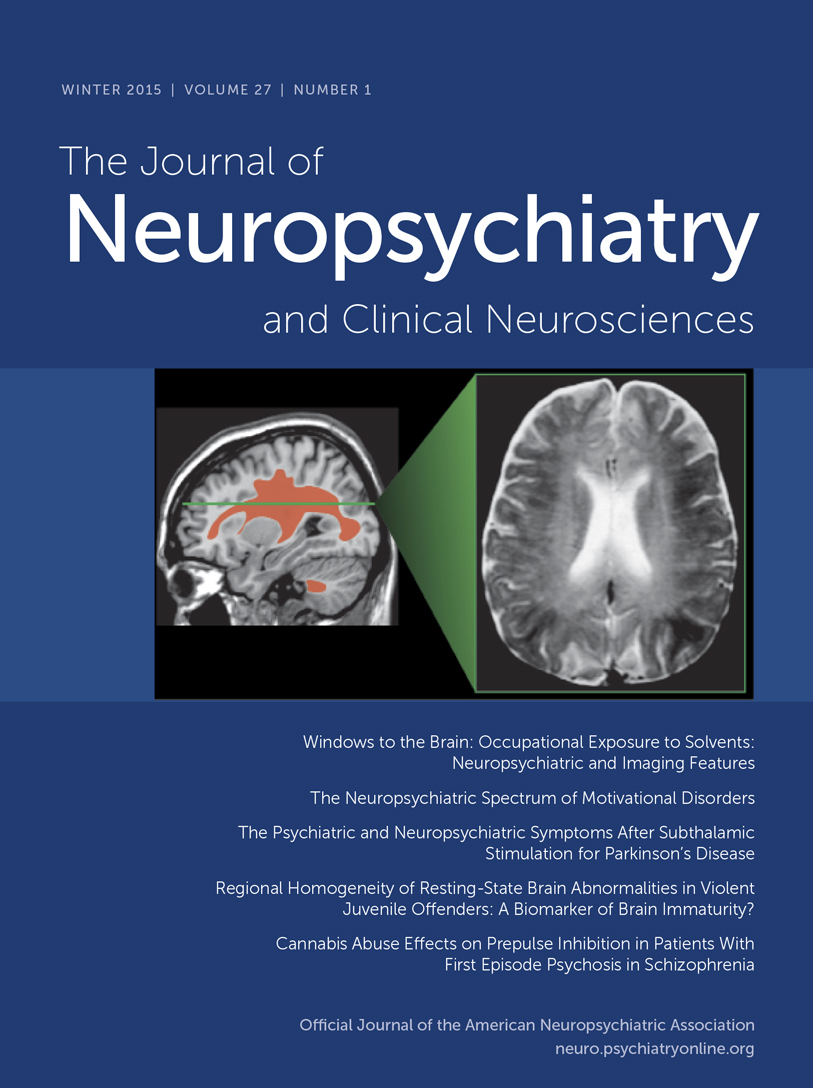Subclavian Steal Syndrome Presenting as a Reversible Dementia
To the Editor: Carotid stenosis can lead to stroke or cerebral hypoperfusion, resulting in cognitive impairment that can be ameliorated by reperfusion.1 Less is known about the effect of vertebrobasilar insufficiency on cognition and its possible improvement with stenting. A literature review suggests that vertebrobasilar insufficiency may produce mild cognitive impairments characterized by axial amnesia—the impairment of learning new information.2 The authors describe a woman with vertebrobasilar insufficiency and subclavian steal syndrome who exhibited a 2-year history of dementia that was reversed following stenting.
Case Report
The patient was a 60-year-old right-handed woman with a life-long history of attention deficit disorder and depression. She experienced difficulty finding words, remembering conversations, and where she placed items. She struggled with routine activities and handwriting and made significant financial errors. Her symptoms were of an insidious onset and gradual progression over the last 2 years. She also had episodes of imbalance with walking and blackouts. Her thought process was tangential and circumstantial, and she scored 18/30 on the Montreal Cognitive Assessment.3 She exhibited right-sided ptosis, symmetrically diminished finger taps bilaterally, and a right-sided Hoffmann’s reflex. Neuropsychological testing performed 1 year earlier revealed mild deficits in attention, planning, sequencing, and word fluency, relative weakness in right hand speed, and moderately severe deficits in verbal and visual memory.
Brain MRI with gadolinium demonstrated evidence of vertebrobasilar insufficiency based on patchy T2 and fluid-attenuated inversion recovery signal hyperintensity and areas with partial volume averaging versus punctate gliosis of left subfrontal subcortical white matter. Duplex of the posterior circulation identified a high-grade subclavian stenosis with retrograde flow via the left vertebral artery—consistent with subclavian steal syndrome. Diagnostic angiogram confirmed these findings and an intact intracerebral vertebrobasiliar system.
Given her vertebrobasilar symptoms and subclavian steal syndrome, the decision was made to improve her posterior perfusion by treating the left subclavian stenosis. Subclavian artery stenting was performed given the high procedural success for stenosis (100%), minimal invasive nature with decreased operative complications, and long-term patency. A balloon expandable stent was placed within the left subclavian artery position proximal to the vertebral and mammary arteries 2 months after her initial evaluation (Figure 1). One month following stent placement, she had marked improvement in her cognition. Ultrasound imaging showed a patent subclavian stent without stenosis and reversal of her vertebral artery flow back to antegrade. Repeat Montreal Cognitive Assessment was 26/30.

FIGURE 1. Angiogram of Proximal Subclavian Stenosis (Arrow) With Balloon Expandable Stent Deployment Proximal to the Vertebral and Mammary Arteries
Discussion
Vertebrobasilar insufficiency can present with varying symptoms dependent on the portions of the brain affected. Intervention is usually performed for classic symptoms of diplopia, imbalance, and/or drop attacks not responsive to postural changes and hydration. Little is known about the cognitive effects of vertebrobasilar insufficiency aside from prior reports of mild axial amnesia and intermittent memory loss. Although one prior case of cognitive improvement following vascular intervention for subclavian steal syndrome has been described,4 our patient had much more extensive and persistent cognitive impairment. This case, in addition to our above report, suggests that subclavian steal syndrome should be considered a cause of possibly reversible dementia and cognitive impairment.
1 : Effects of carotid or vertebrobasilar stent placement on cerebral perfusion and cognition. AJNR Am J Neuroradiol 2005; 26:1772–1780Medline, Google Scholar
2 : Disorders of memory in vertebrobasilar disease. J Clin Neuropsychol 1980; 2:267–276Crossref, Google Scholar
3 : The Montreal Cognitive Assessment, MoCA: a brief screening tool for mild cognitive impairment. J Am Geriatr Soc 2005; 53:695–699Crossref, Medline, Google Scholar
4 : Cognitive changes following surgical intervention for a subclavian steal syndrome. J S C Med Assoc 1978; 74:404–406Medline, Google Scholar



